Garter snakes are some of the most common snakes in the United States. Often referred to as “garden snakes,” these reptiles can be found all the way from the southern tip of Alaska, all the way down into the Florida Keys. The mild disposition and commonality of garter snakes have resulted in them becoming a popular pet for reptile enthusiasts across the country. Like many other snakes, when breeders get involved, lots of incredible snake “morphs” start appearing. Today, we are going to look at some of the most species of garter snakes, plus some of the morphs that are starting to pop up in certain breeding lines.
Garter Snake Morphs vs. Subspecies
The common garter snake is one of the most prevalent snakes across the entire United States. As a result, they are also some of the most commonly encountered. Across the country, there are 13 known subspecies that each inhabit different ecological regions. On top of their environmental differences, each of these 13 subspecies has a unique appearance that clearly separates them from the others.
A garter snake subspecies is a genetically distinct group of snakes, whereas a garter snake morph is simply a particular color or pattern trait that breeders select for.
Let’s go over the common garter snake subspecies, as well as a few of the coolest morphs that breeders are selecting for right now.
Common Garter Snake Subspecies
Eastern Garter Snake

Eastern garter snakes are found across a wide geographic area.
©Erik Agar/Shutterstock.com
The eastern garter snake can be found across the eastern United States from the Mississippi River to the shores of New England. It is likely the most widespread of all the garter snake subspecies and can live in almost any environment. They prefer fields, farmland, old buildings, forests, lakes, rivers, streams, swamps, marshes, and even city parks.
The eastern garter snake is either green, brown, or black, and has a solid yellow or white stripe running down its back. On average, they grow between 18-26 inches, but the largest one ever caught was 49 inches long.
Red-Sided Garter Snake
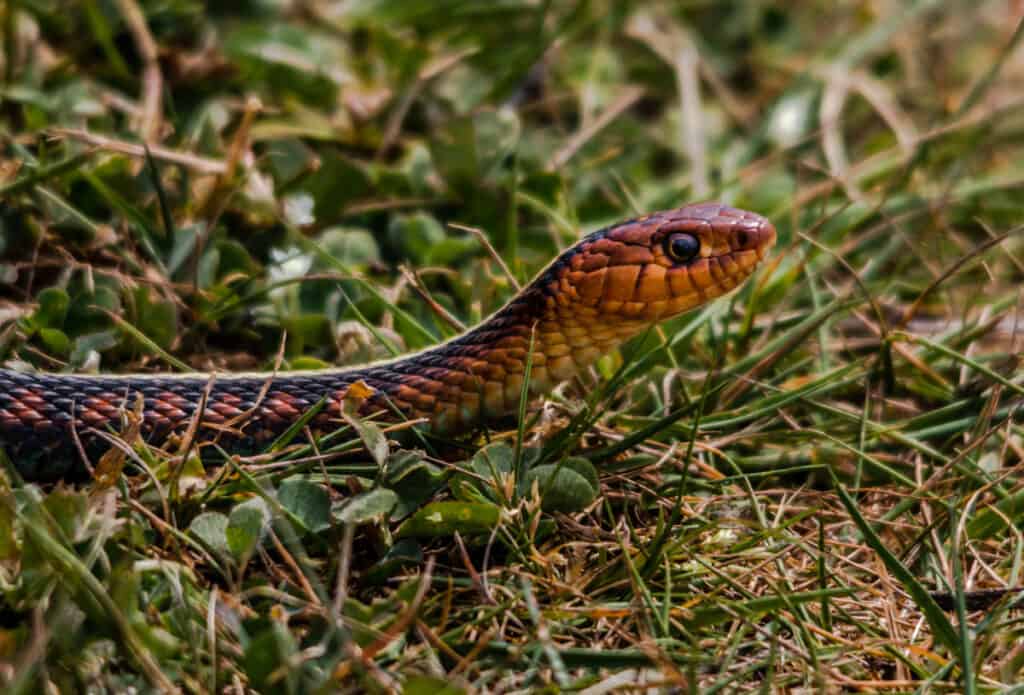
Red-sided garter snakes are found across the prairies.
©iStock.com/raywhittemore
The red-sided garter snake is the furthest north-ranging of the garter snake species. They can be found as far north as Canada’s Northwest Territories, all the way south to the border of Oklahoma and Texas. These incredible snakes have the highest cold tolerance of any North American snake and spend the cold winters burrowing under the ground in large dens shared with other garter snakes.
The red-sided garter snake is black or olive with a distinct white or yellow striping down its back and red patterning down each of its sides. Although they share a name with the California red-sided garter snake, they are categorically different subspecies.
California Red-Sided Garter Snake
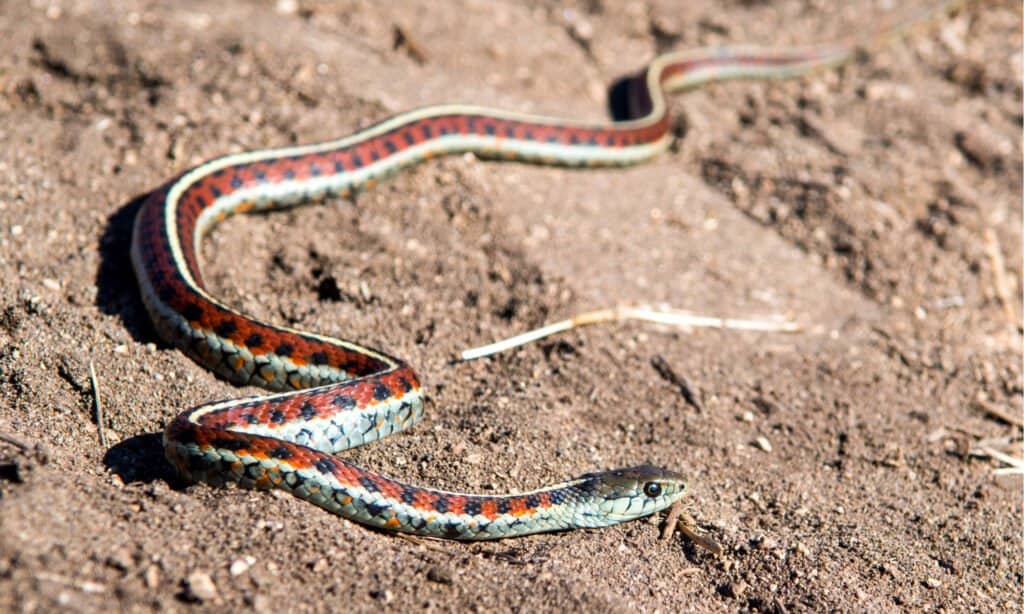
The California red-sided garter snake is only found in California.
©Simone O/Shutterstock.com
The California red-sided garter snake is native to the coast of California.
Where the red-sided garter snake has clear red patterning down its sides, the California red-sided garter snake has vibrant, distinct stripes that instantly identify it. They have the standard three stripes, usually in blue or yellow across their backs, and occasionally feature a red or orange head.
Red-Spotted Garter Snake
The red-spotted garter snake can be found in northwestern Oregon and in some places in southwestern Washington. They generally prefer fields or water and can be found in swamps and near ponds or streams.
The red-spotted garter snake is black with a strong white or yellow back stripe running from tail to tip. On their sides, they have distinct red patches that travel the snake’s length. Their bellies are ringed and are either blue-grey or white.
Northern Mexican Garter Snake
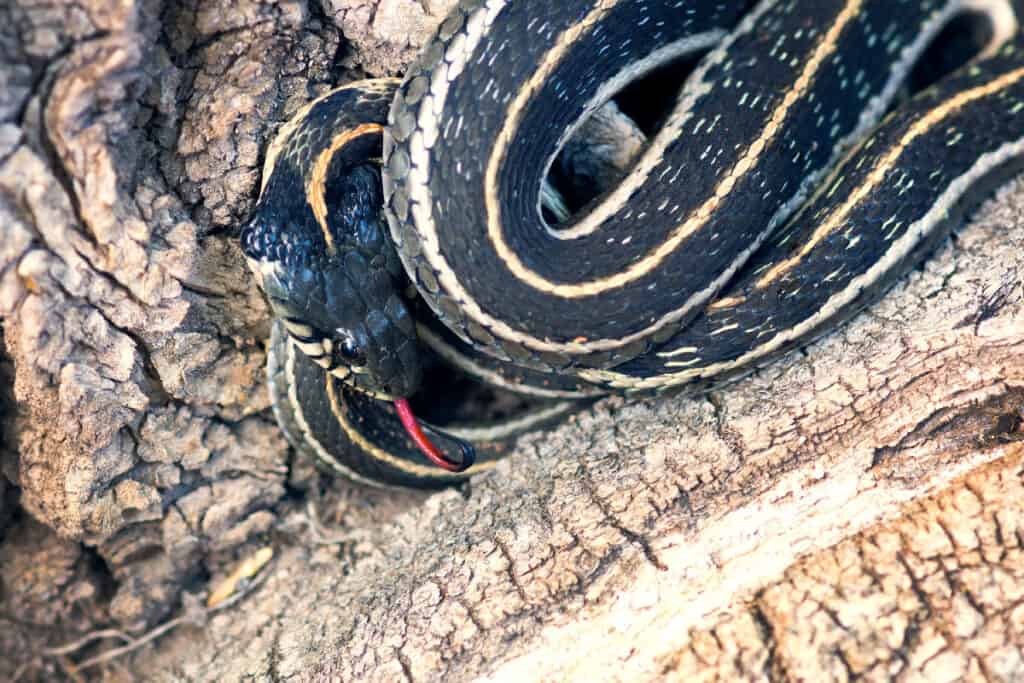
Northern Mexican garter snakes can be found in New Mexico and Mexico.
©IrinaK/Shutterstock.com
The northern Mexican garter snake can be found in Mexico and in southern New Mexico. They are generally found between 3,000-5,000 feet of elevation and prefer river habitats and wetlands.
The northern Mexican garter snake is olive and has three lateral white stripes that run from tip to tail. Additionally, they have a strong yellow stripe running down their back (known as a dorsal stripe).
Puget Sound Garter Snake
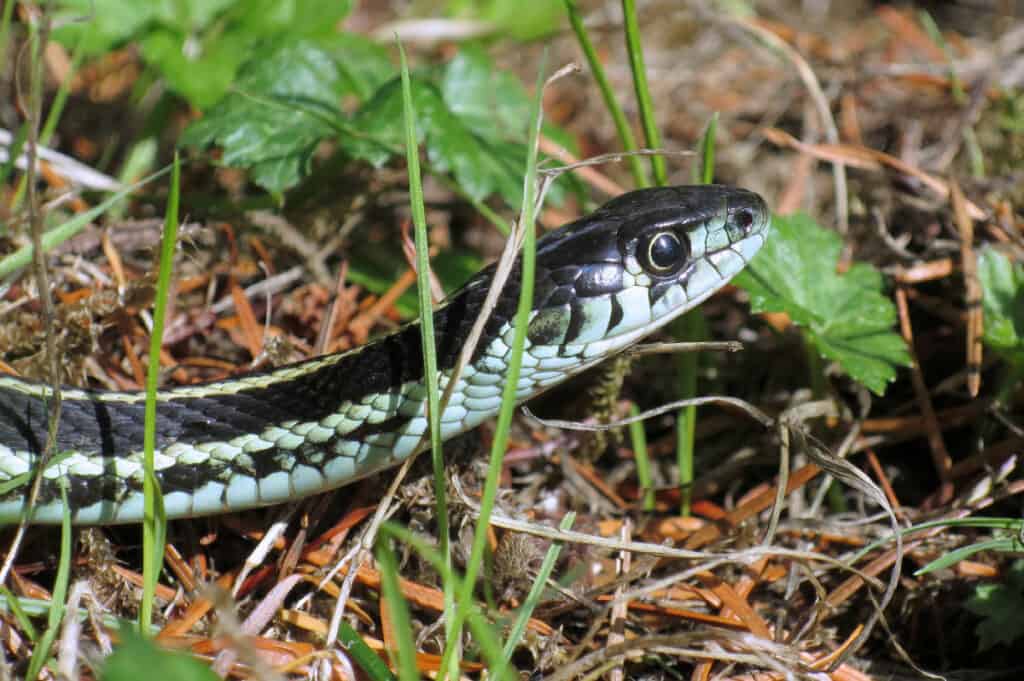
Puget Sound garter snakes live in the Puget Sound region near Seattle.
©iStock.com/randimal
The Puget Sound garter snake inhabits a small range in northwestern Washington, Vancouver Island, and in southwestern British Columbia. They prefer fields, grassy clearings, and places bordering aquatic habitats.
The Puget Sound garter snake is black with lateral white stripes running down its back. Their bellies are blue-white and ringed.
San Fransisco Garter Snake
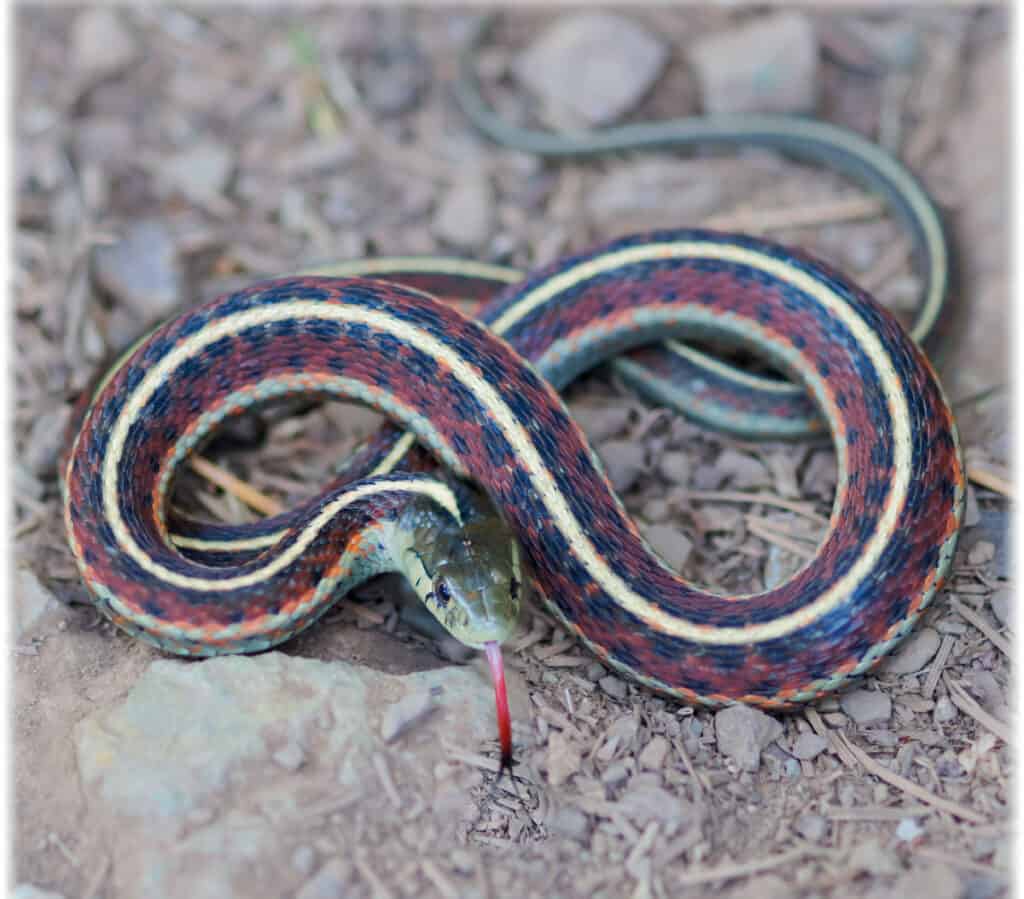
The San Fransisco garter snake is one of the rarest snakes in North America
©iStock.com/yhelfman
The San Fransisco garter snake is an endangered snake that can be found in San Mateo County, California. They prefer wetland habitats, but their range has been drastically reduced over the years.
The San Fransisco garter snake has blue-green dorsal scales and often comes striped in black, red, orange, and blue-green. These snakes are incredibly beautiful but are known to be timid compared to other garter snakes.
Chicago Garter Snake
The Chicago garter snake can be found around Chicago, Illinois. They prefer forests but will inhabit most places that border some body of water. Due to their range, they have a higher cold tolerance than many snakes.
The Chicago garter snake is dark brown or black and has a yellow stripe down its back and both sides. Their belly is grey-green with occasional spots.
Maritime Garter Snake
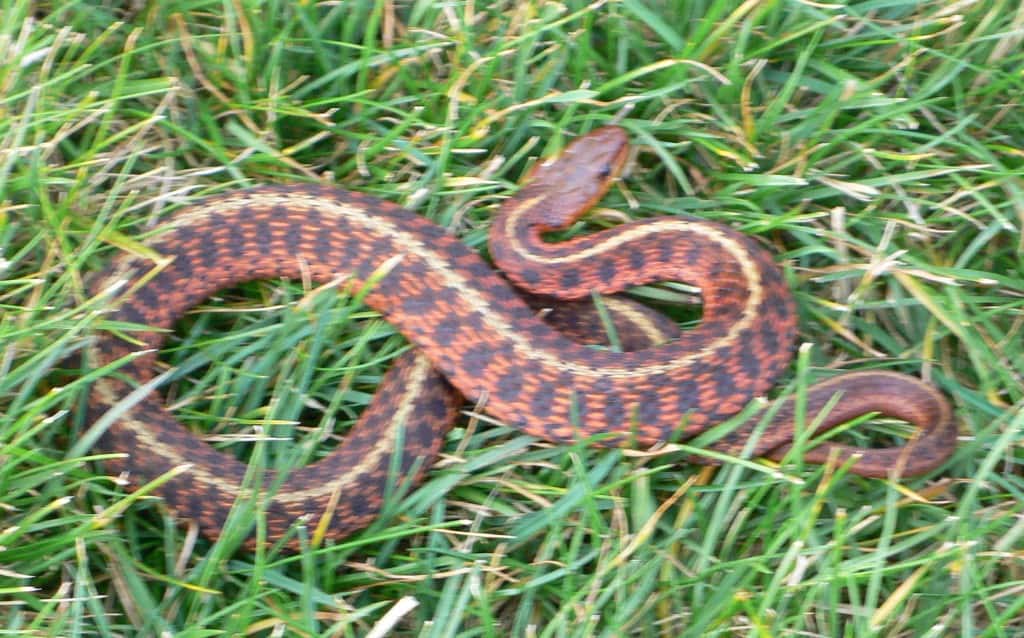
Maritime garter snakes are found in New England and Canada’s Maritime provinces.
© – License
The maritime garter snake can be found in most of New England, Quebec, and the Maritime provinces. They prefer forests, wetlands, shorelines, and fields. Additionally, they can be found on coastal islands and urban areas.
The maritime garter snake can be brown, red, or dark green. They have three yellow stripes, two on the sides and now down the back.
Texas Garter Snake
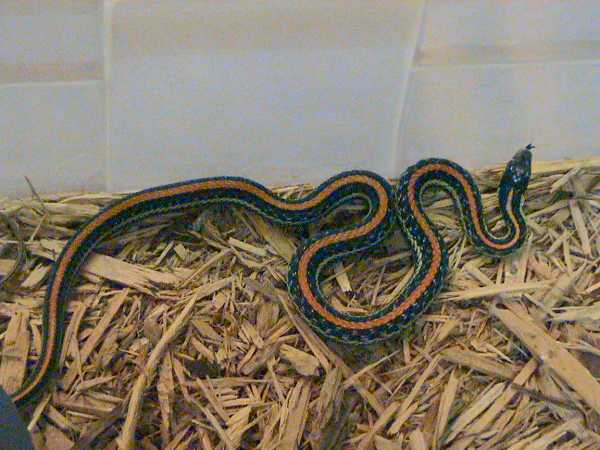
Texas garter snakes have a distinctive red stripe across their top.
©Dawson / CC BY-SA 2.5 – License
The Texas garter snake can be found in central Texas, Kansas, and some places in South Dakota. They prefer habitats close to water and are occasionally found in damp soil and mixed in with human rubbish. Even in their highest populated region of Texas, they are uncommon.
The Texas garter snake is greenish-black with a bright orange or red dorsal stripe and two yellow stripes down the side.
Valley Garter Snake
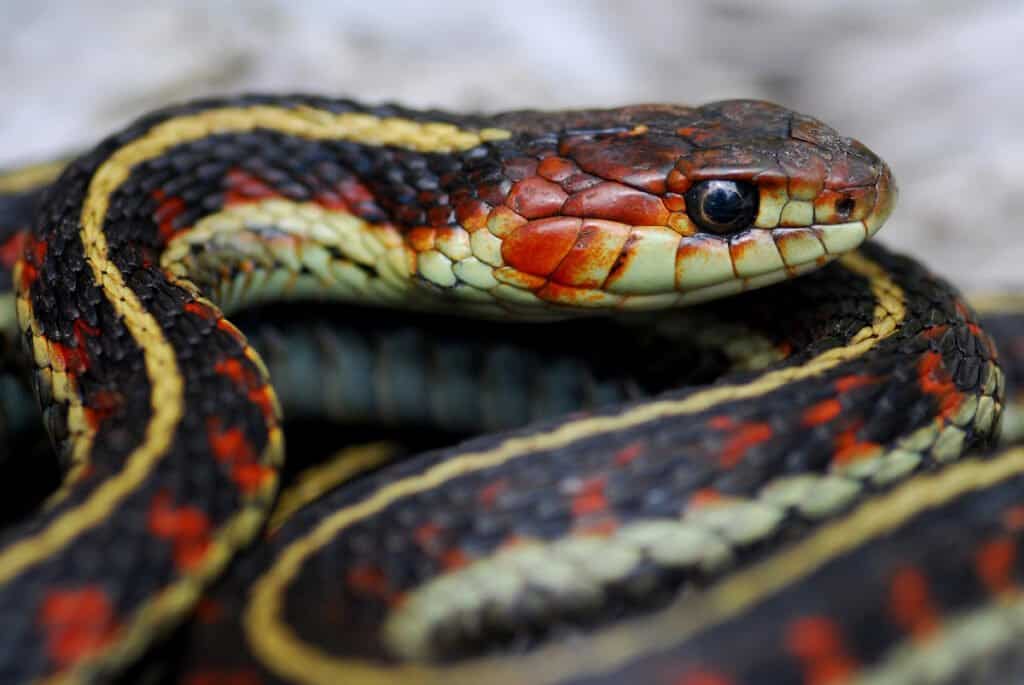
The valley garter
snake likes high elevations near water
.
©Jason Mintzer/Shutterstock.com
The valley garter snake can be found in the Rocky Mountains and within the valleys of the interior ranges. They generally prefer high elevations, usually near water.
The valley garter snake is brown or black and has three yellow stripes down its back. They are known for their beautiful red patterning situated right above their yellow stripes that run the length of their body.
Blue-Striped Garter Snake

The blue-striped garter snake is found in Florida and can come in a few colors. Most notably, they can come in a striking shade of blue
©Jay Ondreicka/Shutterstock.com
The blue-striped garter snake can be found in the northwestern peninsula of Florida. They prefer forests, prairies, and wetlands.
The blue-striped garter snake is black or brown and has three light blue stripes on the dorsal and sides, running the length of the body. They occasionally lack stripes, however, and have a checkerboard pattern instead.
Chihuahua Garter Snake
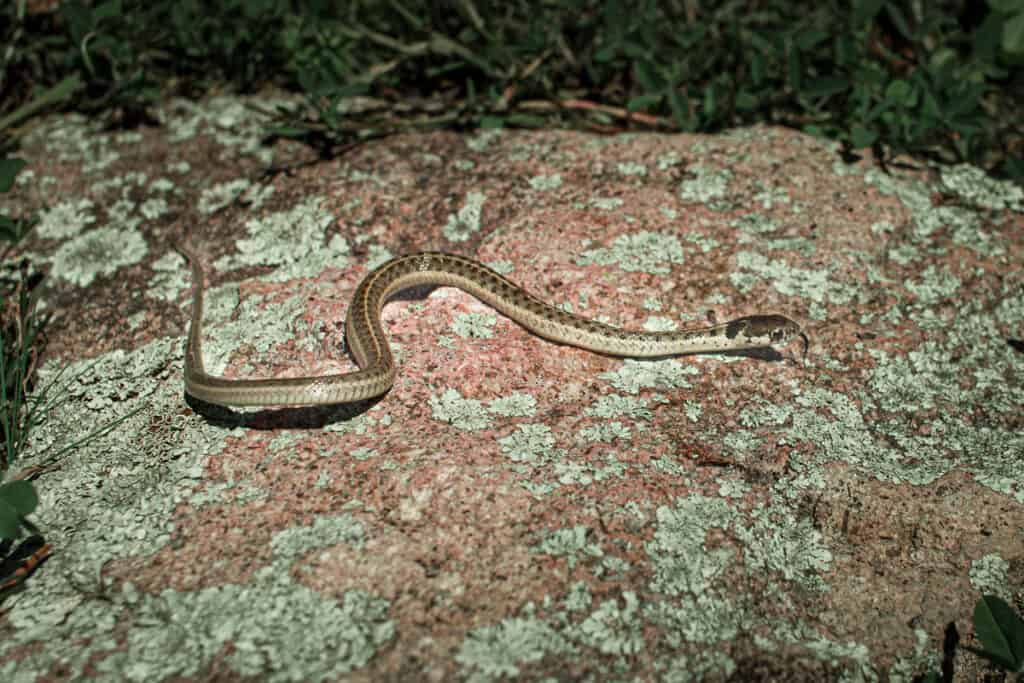
Chihuahua garter snakes are named after the region in Mexico.
©FredyErives/Shutterstock.com
The Chihuahuan garter snake isn’t technically a name for the species, but it is isolated to the Chihuahua region in Mexico. They prefer streams and meadows and have been separated from the populations of garter snakes in New Mexico since the last ice age.
The Chihuahuan garter snake is brown or black and has three stripes running down its body, usually red or pink in color.
The Coolest Garter Snake Morphs
Garter snake morphs are rising in popularity! These morphs aren’t separate species of garter snake, they are just certain traits that many breeders find particularly beautiful or unique. Here are the most common ones:
Albino
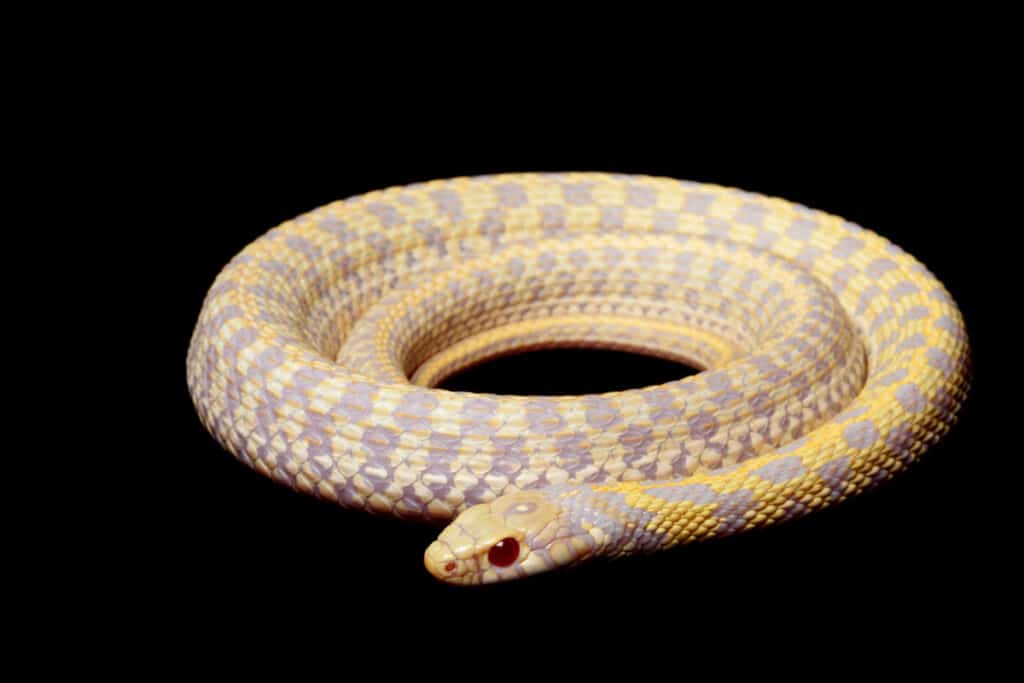
Albino garter snakes don’t have any melanin in their scales and are white and red
©fivespots/Shutterstock.com
The albino garter snake morph is characterized by a lack of dark pigment (melanin) in their scales. The resulting snake is usually white and red.
Melanistic
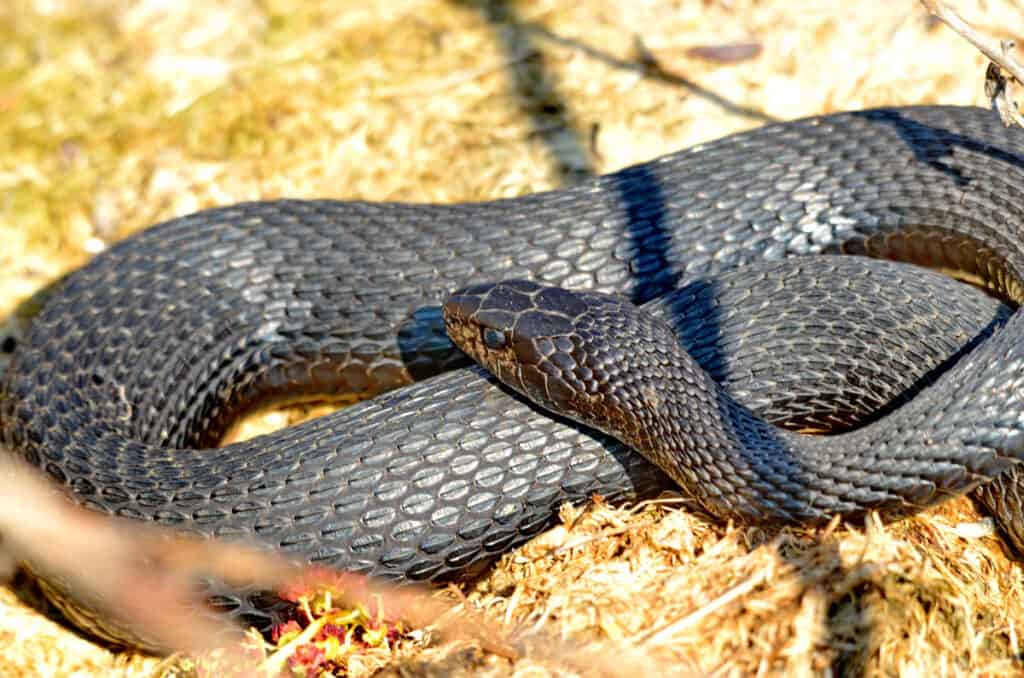
Melanistic garter snakes have an excess of melanin and come in dark shades of brown and black
©iStock.com/Bob Hilscher
The melanistic garter snake morph is the opposite of the albino morph and has excess melanin. The resulting snake is much darker, sometimes appearing jet black.
Anerythristic
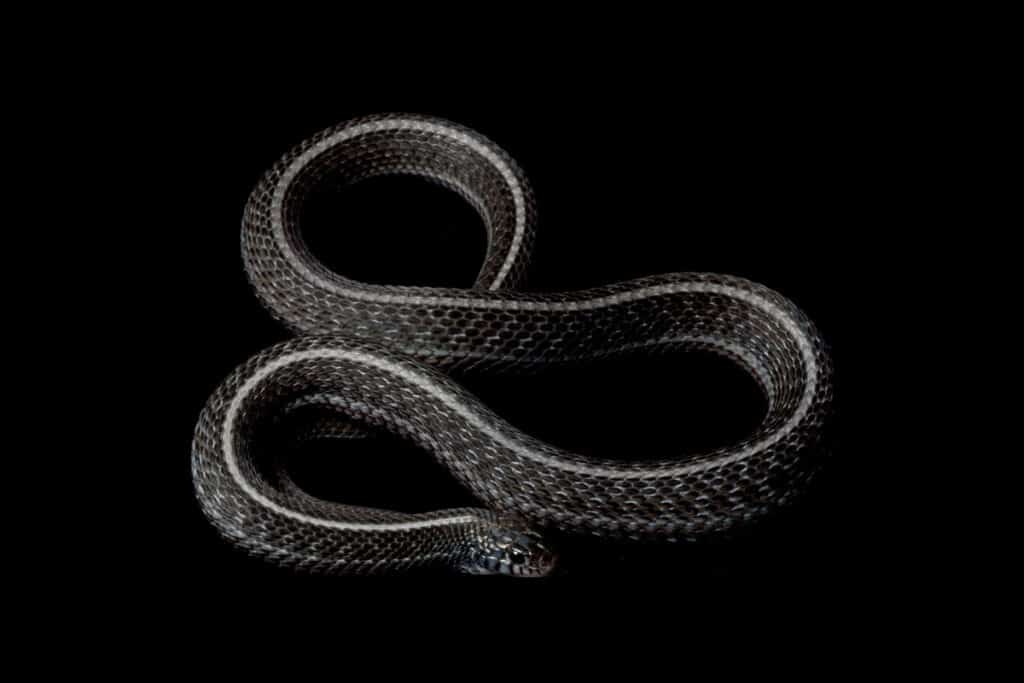
The Anerythristic garter snake lacks red pigmentation
©fivespots/Shutterstock.com
The anerythristic garter snake morph is characterized by its black, white, and bluish coloration. This morph is the result of a lack of red pigmentation.
Snow
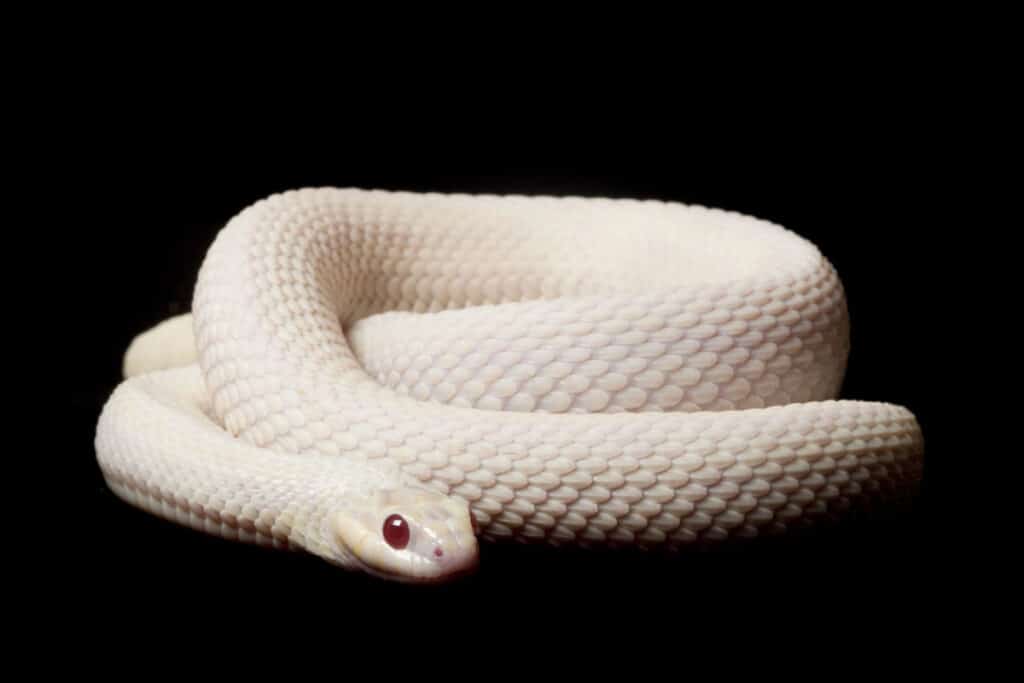
The snow garter snake is made by breeding an albino and an anerythristic morph together
©fivespots/Shutterstock.com
The snow garter snake morph is characterized by a stark white body, red eyes, and a lack of patterning. This morph is the result of combining the anerythristic and albino morphs.
Axanthic
The axanthic garter snake morph is characterized by its strong black and white appearance. Axanthic morphs don’t produce yellow pigment, usually resulting in stronger showings of blue, black, and white.
Pastel
The pastel garter snake morph is characterized by its strong checkerboard pattern of black and yellow. They come from the checkered garter snake subspecies, along with the granite morph.
Granite
The granite garter snake morph is characterized by its grey and black checkerboard pattern that resembles granite. Like the pastel garter snake, granites come from the checkered garter snake subspecies.
Blue
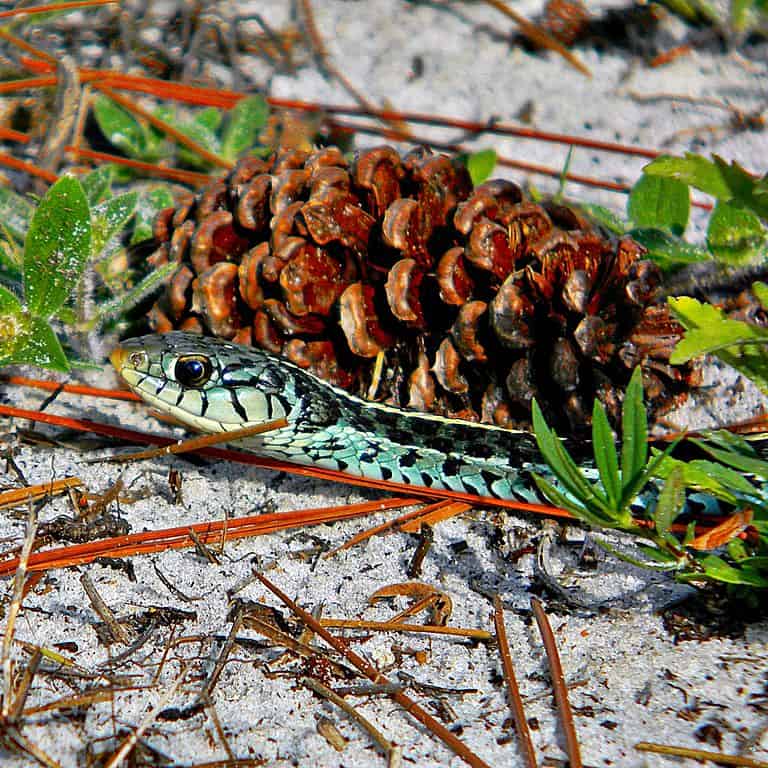
The blue garter snake morph usually comes from a California red-sided garter snake
©Bob Peterson from North Palm Beach, Florida / Creative Commons – License
The blue garter snake morph is characterized by a prevalence of blue across its body. Many garter snake species have blue pigmentation to some degree, but most blue morphs are derived from special lines stemming from the California red-sided garter snake.
Erythristic
The erythristic garter snake morph is characterized by an increase of red pigmentation across its body. Erythristic morphs produce excess red pigmentation resulting in orange or red snakes.
High Red
The high red or “flame” garter snake morph is characterized by vibrant red patterning along its back and sides. They usually stem from eastern garter snakes and are often combined with other morphs to create unique snakes.
Pied
The pied garter snake morph is characterized by large white patches across the body. The resulting snake looks like it was splashed with paint and is extremely unique. Pied mutations are rare in garter snakes, and only one wild example has been found.
The photo featured at the top of this post is © fivespots/Shutterstock.com
Discover the "Monster" Snake 5X Bigger than an Anaconda
Every day A-Z Animals sends out some of the most incredible facts in the world from our free newsletter. Want to discover the 10 most beautiful snakes in the world, a "snake island" where you're never more than 3 feet from danger, or a "monster" snake 5X larger than an anaconda? Then sign up right now and you'll start receiving our daily newsletter absolutely free.
Thank you for reading! Have some feedback for us? Contact the AZ Animals editorial team.







